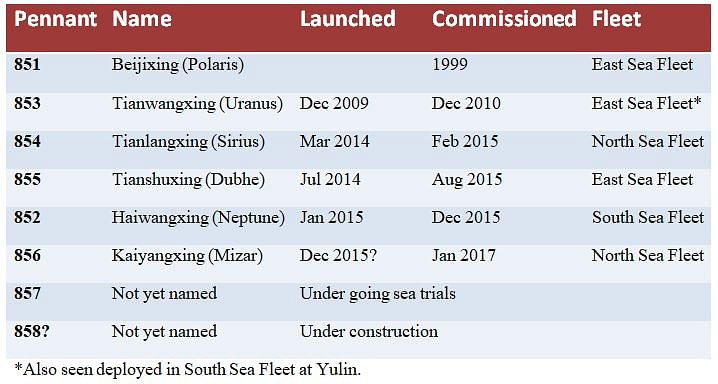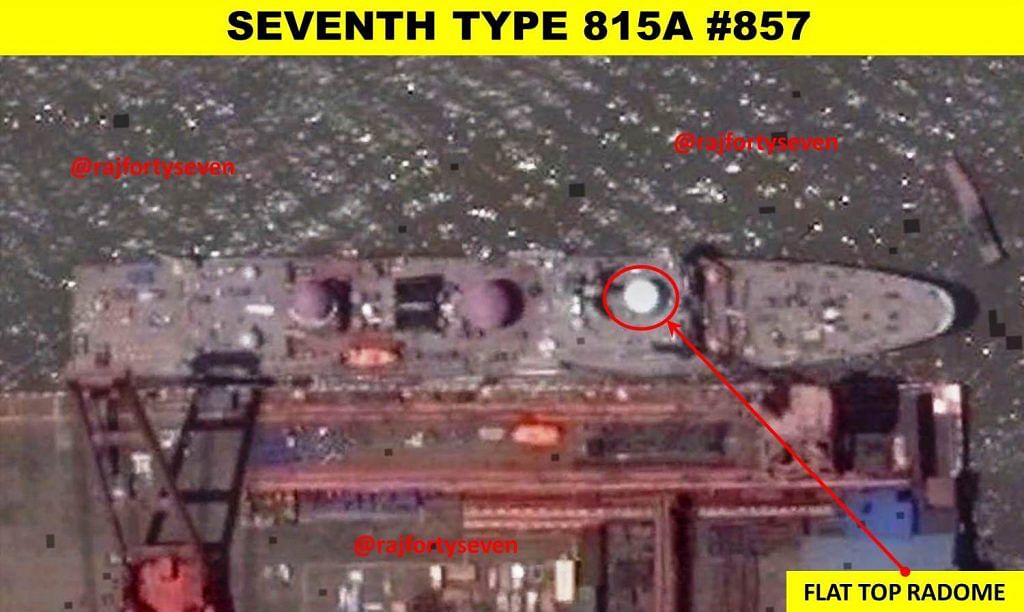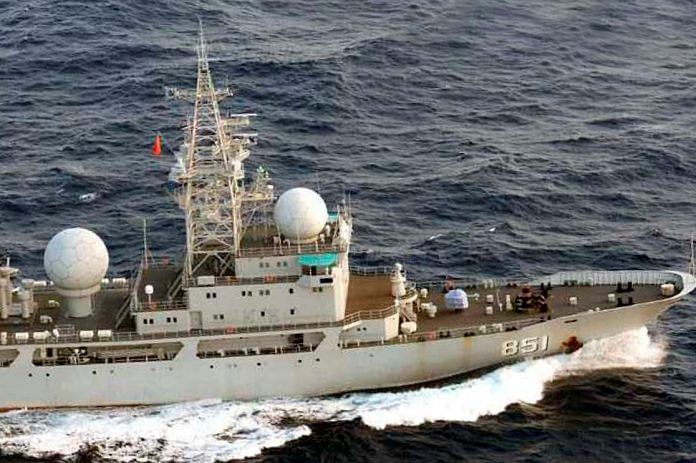Chinese spy ships collect data on Japanese, Indian, Australian and US navies – six are in service, one is undergoing trials and one is being built.
China has made vast progress in the field of electronic intelligence and signals intelligence in the past two decades. No one expected China to field this knowledge on its naval ships, but Beijing has single-mindedly been at it since the turn of the millennium.
ThePrint has accessed information that shows the extent of China’s success in this endeavour, so much so that it already has two spy ships in each of its three naval fleets. Now, it is in the process of commissioning two more ships – one of which is undergoing trials and another is under construction.
First venture
The Chinese navy, better known as the Peoples’ Liberation Army Navy (PLAN), surprised the Japanese Maritime Self Defence Force when a ship named Dongdiao (pennant No.232) was observed near the Japanese coast in February 2000.
The ship, commissioned in late 1999, was collecting intelligence on various radar sites, naval stations and other sensitive electronic equipment days before PLAN conducted a massive drill in the waters of the East China Sea. Its task was clear from the dish antennae it carried on the deck, as well as the electronic gadgets it fielded on the mast.
This was the Type 815 ship later named Beijixing (pennant No.851). NATO calls it the Dongdiao class auxiliary general intelligence ship.
It is very surprising to note that after a lull of more than 11 years, China felt the urgent need to construct more of these spy ships. All the ships except the Beijixing were commissioned after 2010.

Ships constructed later were modified with a leaner bow for speed and better electronics, making them Type 815A ships.
But China has a large appetite for more intelligence, so it is hurrying to commission two more ships.

Equipment and capabilities
The first ship originally had three dish antennae considered to be for monitoring and tracking missiles. After the renaming of the first ship, the dish antennae were replaced by spherical radomes. The last two ships, 856 & 857, have a cylindrical shaped flat-topped radome on the bridge claimed to be for intercepting and collecting very low powered radio signals.

The main task of these ships is to identify surface, airborne, and space-based activities of adversaries, and to gain accurate information on tactics and strategies adopted in various situations.
These ships are known to have specialised, sensitive signal analysers, direction-finding systems and radio monitors for snooping activities. They are also rumoured to be equipped with interfering and jamming equipment capable of adversely affecting the enemy’s communications, electronic and weapon guidance systems.
Tailing record
The Chinese ships have mostly been snooping on the Japanese navy and its activities in the East China Sea. But recently, they were also observed spying on various Western naval ships and exercises.
The US-led naval drills RIM of PACific were spied upon in 2014. The ship came very close to Hawaii, within the US economic zone, but remained outside its territorial waters. This incident took place despite PLAN having sent an oversized contingent for the exercise.
In the month of June 2016, during the Malabar 2016 exercise conducted in the Western Pacific, a Chinese spy ship was noticed tailing two Indian warships. The complex nature of India’s Malabar exercise often attracts the attention of the Chinese navy.
China protested against the conduct and intention of the recent Malabar 2017 joint exercise conducted in the Bay of Bengal between the navies of India, the US and Japan. The drills were reportedly monitored by the spy ship named Haiwangxing, pennant No.852.
The recent US Navy and Australian Navy joint exercise Talisman Sabre 2017 was again tagged by a Chinese spy ship.
The amphibious exercise was a combined naval, air and ground force exercise intended to test and develop the interoperability of Australian and US forces.
A report said a Chinese spy ship was seen in international waters, monitoring and recording communications, radar signals and movements.
Implications for India
These spy ships are a reality of today’s naval warfare. The Indian Navy is bound to spot them, especially when moving in the South China Sea or the East China Sea.
The Indian Navy must strengthen its electronic and other equipment, as also deploy countermeasures to avoid being caught off-guard. It should make an effort to have an array of diverse and cutting-edge electronic equipment, so that alternate means are quickly and easily available.
There is also a need to hasten the construction progress of India’s own intelligence-gathering ships, to ensure good knowledge of adversaries.






